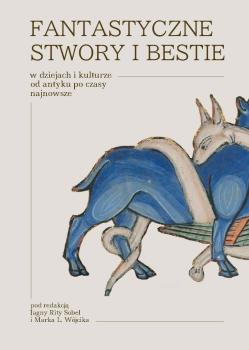Bestie seksualne? Gemma z Lejdy i wizerunek kobiecej homoerotyki w kulturze grecko-rzymskiej .......... 39
Synopsis
SEXUAL BEASTS? THE GEM FROM LEIDEN AND THE IMAGE OF FEMALE HOMOEROTICISM IN GRECO-ROMAN CULTURE
The concept of a tribade, specific to Greco-Roman culture and literature, meant a woman who usurped an active role in the domain of sex, a role reserved for men and which did not correspond to her “nature”. In the scholarly literature on the history of sexuality in antiquity, the view is often presented that in Rome such women were considered truly terrifying monsters, sexual beasts who, waving artificial phalluses or exposing large clitorises, chased men and women. Their relations with men were tantamount to enslaving and humiliating the latter. However, recently voices have been raised challenging such assumptions. In this publication, I would like to draw attention to a testimony that not only was not included in this discussion, but also deserves a broader commentary in itself, because it may shed new light on a little-known aspect of the history of sexuality in the Greco-Roman era. The National Archaeological Museum in Leiden in the Netherlands houses an oval agate gem of unknown origin, probably dated to the 1st century BC (Rijksmuseum van Oudheden inventory no. GS-01172). It depicts a scene with an inscription which has been the subject of quite divergent interpretations by researchers. In my opinion, what we have before our eyes is a representation of transgressive, norm-breaking sex performed by an active woman and a passive man. Sexual practices that amount to something that is currently referred to as so-called pegging, which in Greco-Roman culture aroused disgust and disbelief to such an extent that we have almost no mention of them in sources, were presented as the fulfillment of an ideal, a manifestation of life wisdom. The Leiden gem is one of the many, multifaceted testimonies of ancient, popular hedonism. Behind the facade of patriarchal, macho culture of men in the role of dominators, there had to be hidden practices and behaviors that constituted its radical negation. The lifestyle and beliefs of some people, groups, maybe even subcultures, determined non-normative sexual inclinations and practices based on the rejection of the traditional, Roman concept of masculinity and considered “bestial” in the ancient world.





